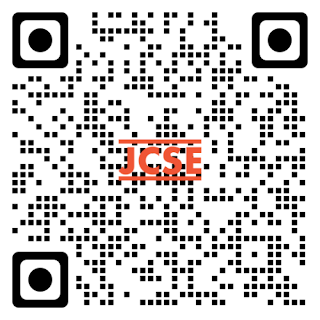Malaria Parasite Classification from Microscopic Images using EfficientNetV2B0 with Bayesian Optimization
(1) Universitas Gunadarma
(2)
(3) Universitas Gunadarma
(4)
(5) Universitas Gunadarma
Abstract
Malaria Parasite Classification from Microscopic Images using EfficientNetV2B0 with Bayesian Optimization
Keywords
Full Text:
PDFReferences
N. P. Kar, A. Kumar, O. P. Singh, J. M. Carlton and N. Nanda, "A review of malaria transmission dynamics in forest ecosystems," Parasites & Vectors, no. 265, 2014.
P. Venkatesan, "The 2023 WHO World malaria report," vol. 5, no. 3, p. e214, March 2024.
A. Mahittikorn, F. R. Masangkay, K. U. Kotepui, G. D. J. Milanez and M. Kotepui, "Quantification of the misidentification of Plasmodium knowlesi as Plasmodium malariae by microscopy: an analysis of 1569 P. knowlesi cases," Malaria Journal, no. 179, 09 April 2021. doi: 10.1186/s12936-021-03714-1.
S. Rajaraman, S. K. Antani, M. Poostchi, K. Silamut, M. A. Hossain, R. J. Maude, S. Jaeger and G. R. Thoma, "Pre-trained convolutional neural networks as feature extractors toward improved malaria parasite detection in thin blood smear images," PeerJ, vol. 6, p. e4568, 2018. doi: 10.7717/peerj.4568/supp-1.
M. Tan and Q. Le, "EfficientNet: Rethinking Model Scaling for Convolutional Neural Networks," in Proceedings of the 36th International Conference on Machine Learning, 2019.
M. Mujahid, F. Rustam, R. Shafique, E. C. Montero, E. S. Alvarado, I. D. I. T. Diez and I. Ashraf, "Efficient deep learning-based approach for malaria detection using red blood cell smears," Scientific Reports, vol. 14, no. 1, p. 13249, 2024. doi: 10.1038/s41598-024-63831-0.
H. A. H. Chaudhry, M. S. Farid, A. Fiandrotti and M. Grangetto, "A lightweight deep learning architecture for malaria parasite-type classification and life cycle stage detection," Neural Computing and Applications, vol. 36, pp. 19795-19805, August 2024.
C. Schröer, F. Kruse and J. M. Gómez, "A Systematic Literature Review on Applying CRISP-DM Process Model," in Procedia Computer Science, 2021. doi: 10.1016/j.procs.2021.01.199.
Kaggle, "Cell Images for Detecting Malaria," Kaggle. [Online]. Available: https://www.kaggle.com/datasets/iarunava/cell-images-for-detecting-malaria.
Kaggle, "Cell Images for Detecting Malaria," Kaggle. [Online]. Available: https://www.kaggle.com/datasets/iarunava/cell-images-for-detecting-malaria.
A. F. Agustin, H. R. Albarki, R. S. H. Martin and J. A, "Identification of fish meal adulterated with rice bran by using an image analysis method," in The 6th International Conference on Agriculture, Environment and Food Security, 2023. doi: 10.1088/1755-1315/1241/1/012138.
P. Zeng, "Research on Similar Animal Classification Based on CNN Algorithm," in International Conference on Computer Technology, Information Engineering and Electron Materials (CTIEEM 2021), 2021. doi: 10.1088/1742-6596/2132/1/012001.
W. Chen, K. Yang, Z. Yu, Y. Shi and C. L. P. Chen, "A survey on imbalanced learning: latest research, applications and future directions," Artif Intell Rev 57, no. 137, 2024. doi: 10.1007/s10462-024-10759-6.
H. Dastour and Q. K. Hassan, "A Comparison of Deep Transfer Learning Methods for Land Use and Land Cover Classification," Sustainability, vol. 15, no. 10, p. 7854, 2023. doi: 10.3390/su15107854.
A. Heikal, A. El-Ghamry, S. Elmougy and M. Z. Rashad, "Fine tuning deep learning models for breast tumor classification," Sci Rep, vol. 14, no. 1, 2024. doi: 10.1038/s41598-024-60245-w.
P. Mishra and D. Passos, "A tutorial on automatic hyperparameter tuning of deep spectral modelling for regression and classification tasks," Chemometrics and Intelligent Laboratory Systems, 2022. doi: 10.1016/j.chemolab.2022.104520.
S. A. Hicks, I. Strümke, V. Thambawita, M. Hammou, M. A. Riegler, P. Halvorsen and S. Parasa, "On evaluation metrics for medical applications of artificial intelligence," Sci Rep, vol. 12, no. 1, p. 5979, 8 April 2022. doi: 10.1038/s41598-022-09954-8.
Refbacks
- There are currently no refbacks.
Indexs by:

 Journal of Computer Science and Engineering (JCSE)
Journal of Computer Science and Engineering (JCSE)Published by : ICSE (Institute of Computer Sciences and Engineering)
Website : http://icsejournal.com/index.php/JCSE/
Email: jcse@icsejournal.com
 is licensed under a Creative Commons Attribution-ShareAlike 4.0 International License.
is licensed under a Creative Commons Attribution-ShareAlike 4.0 International License.







